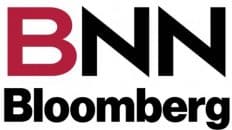Well, that’s all gone and forgotten now. Yes, as far as the refining industry is concerned, this summer is now history, and you can forget the driving season, too.
The focus has now turned to the upcoming winter and heating season.
But before we go down that bumpy road, I must point out that the refiners are weeping with joy while consumers are just plain weeping from the pain at the pump.
Last week we looked at the refining margins, which have hit the stratosphere – jumping in some major cities by 68% since the start of the year. Just to refresh the terminology for you, the refining margin is the spread between the cost of crude and the wholesale price.
But there is yet another factor in the pump price that needs to be put under the microscope, and that is the marketing, or retail margin. This is the difference between the wholesale price and the end point pump price. It represents the retailer’s gross margin before paying out costs like insurance, maintenance, cross lease expenses, wages, and so on.
In the past, this gross margin for the retailer was in and around 7 cents per litre. That has changed though, and not to the consumer’s benefit, especially in western Canada. These are the margin increases across Canada when comparing July 2021 to July 2022 in cents per litre:
Vancouver + 6
Calgary + 21
Regina + 18
Winnipeg + 19
Toronto + 3
Montreal + 1
Halifax + 2
It seems that the west is following a different pricing path than the rest of the country. The pump prices in the prairies do not follow the price of crude when we look at rack prices. It also seems to me that the refining margins are based on those from another planet, as are the retail margins. One would think that this would attract questions from political interests and media, but nobody seems to be asking.
Moving onto the crystal ball of fall and winter pricing, it sure doesn’t look good if the latest U.S. inventory report is to be believed – and you better believe it.
Distillate (diesel, heating oil, and jet fuel) levels are down 23% versus the 5-year average. These should be increasing at this time of year, but they are continuing to fall. If we have an early and extended cold snap, and if the Russia/Europe natural gas standoff gets worse, then look for distillate levels in North America to get tighter as exports of Liquified Natural Gas (LNG) and diesel will jump in to fill the European supply gap.
And when diesel prices go up in the fall, you guessed it, gasoline prices will also increase.
Looks like it’s back to the future.
– Roger McKnight – B.Sc., Senior Petroleum Analyst








Add comment